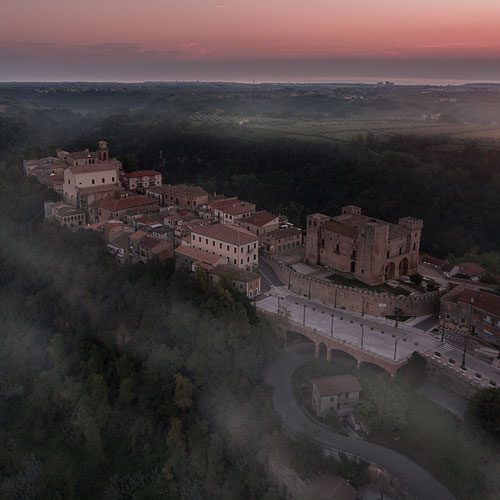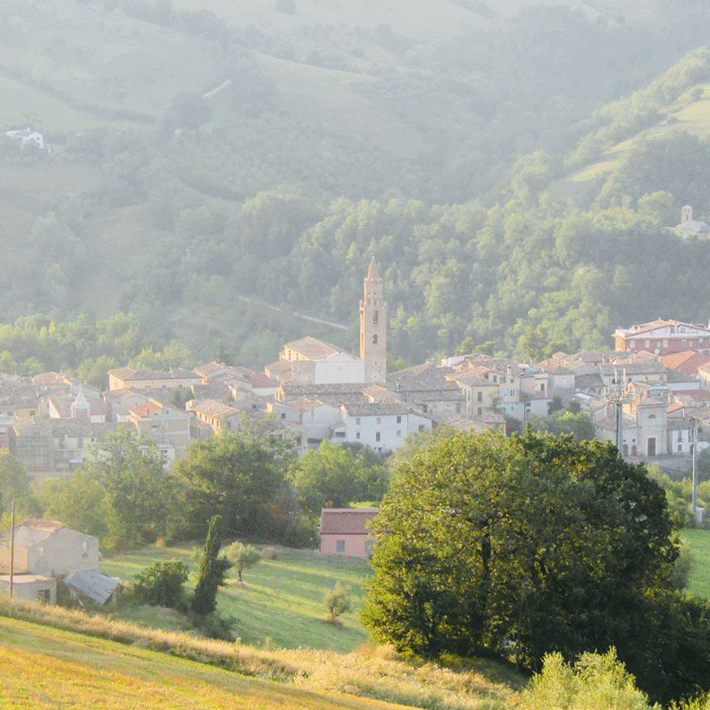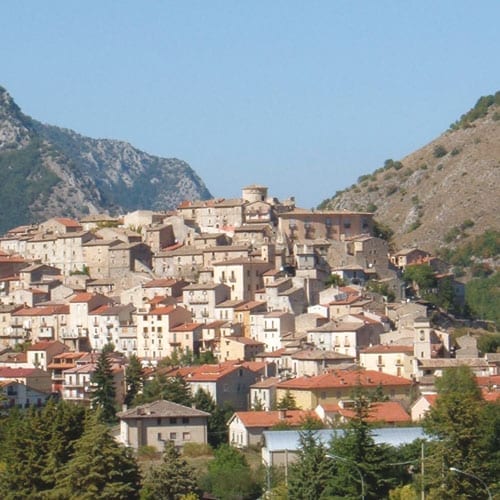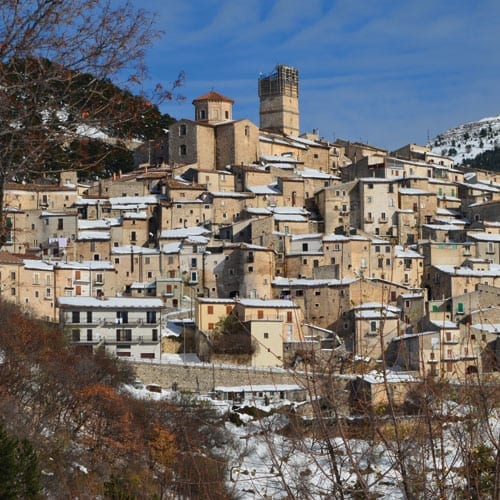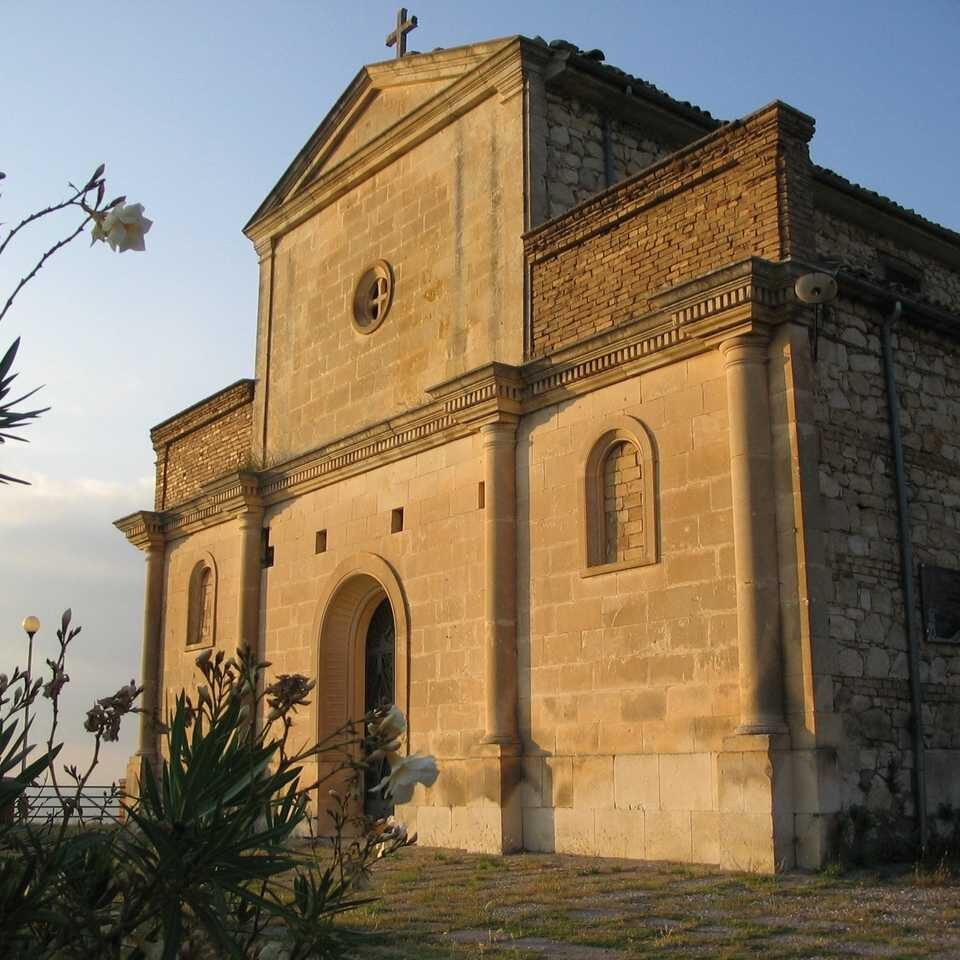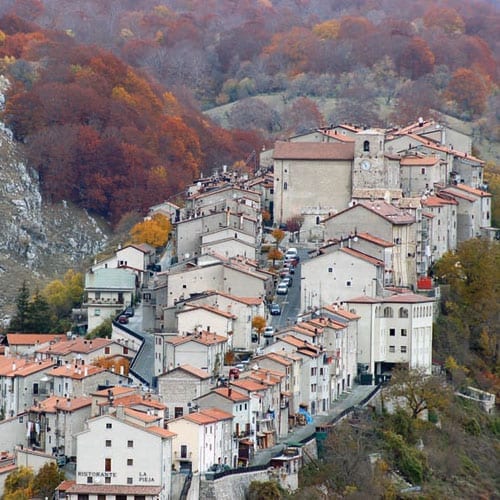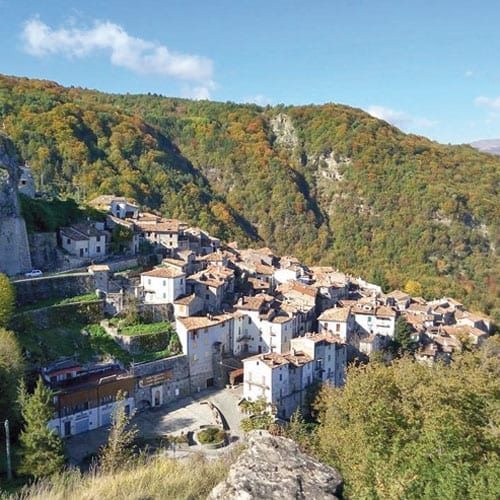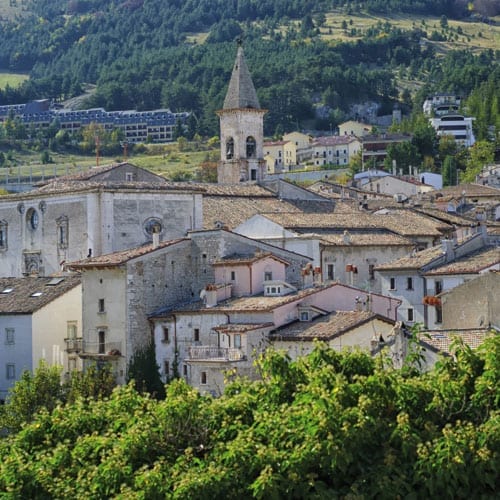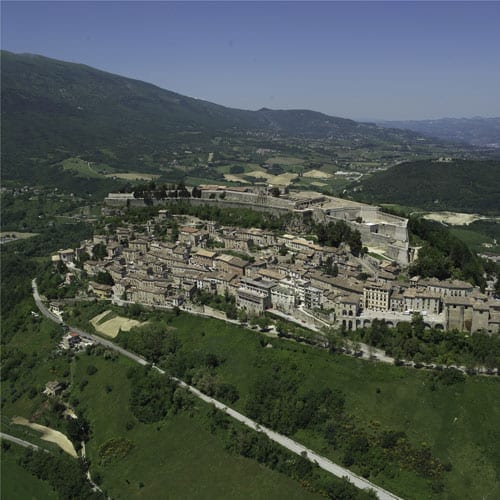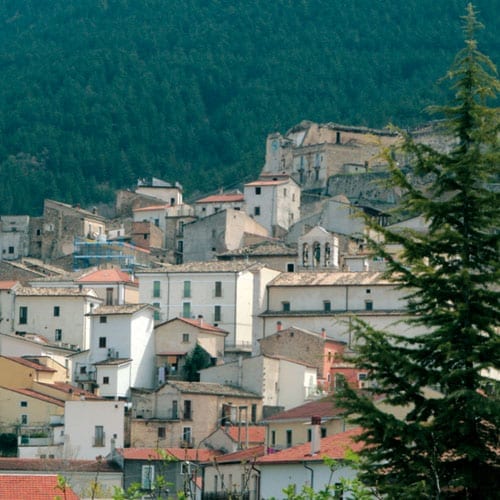 Caramanico Terme
Caramanico Terme
MUNICIPALITY OF caramanico terme
(Pescara District)
Altitude
mt. 700 a.s.l.
POPULATION
2.114
Patron SAINT
SS. Maria Assunta, August 15th
TOURIST INFORMATION
IAT, Ph. 085 9290202
Valle dell’Orfento Visitor Center, Ph. 085 92 23 43
Parco Nazionale della Maiella Information center, Ph. 085 922021
www.comunecaramanicoterme.it
 The origin of the name is probably Lombard. The foundation of Caramanico is related to a settlement of a Lombard community, probably a group of soldiers.
The origin of the name is probably Lombard. The foundation of Caramanico is related to a settlement of a Lombard community, probably a group of soldiers.
From the woods of Mt. Maiella, the Borgo of Caramanico looks like “a melt of Acropolis”, as city planners call high middle ages settlements that have this kind of structure. The village was founded in Longobard period on a promontory at the confluence of two rivers, the Orfento and the Orta. The main path develops on the line of the ridge, with atop the fortification, which had to be defended not only from the castle, now reduced to ruins, but also from the same main church, the almost millenarian abbey of Santa Maria Maggiore, equipped for this purpose with robust walls. The Abbey has a magnificent gothic portal dated 1452, surmounted by a lunette with a refined bas-relief representing the coronation of the Virgin,by the German artist John from Luebeck. The inside, rebuilt in the XVI century and enriched with the late sixteenth century stone altar of the Assumption, with polychrome marbles, twisted columns, and a wooden fifteenth century Crucifix. If the church of the Trinity can certainly not compete with the nearby abbey of Santa Maria Maggiore, in the nearby Via Verdi you’ll admire two beautiful Palaces, D’Aquino e Salerni, built in 1706 after the earthquake and rich in coats of arms. Do not miss to visit the Church of San Tommaso d’Aquino with a Romanesque portal surmounted by a rose window, whose construction began in 1401, The Church was erected at the behest of the Dominican friar Giacomo d’Aquino in memory of his famous ancestor Thomas. Today the building is used as an Auditorium.
The lower part of the Borgo is the most authentic one, here you can visit the church of San Nicola di Bari, with a sober neoclassical façade and a remarkable Baroque portal dated 1592. The statue of St Nicholas in the central niche dates back to the XIII century.
Even if the plaster has gradually covered the facades of the buildings, the district of San Maurizio remains the heart of this Borgo, with the votive shrines scattered in the streets, with images of the Birgin Mary carved by local stonemasons. In this part of the Borgo you’ll find the church of San Maurizio, already mentioned in 1301, and the former Clarisse convent , founded in 1636 and presently the seat of the Museum Fauna Abruzzese.
Five km away from the center you can visit San Tommaso hamlet with the most important religious building of the area: the Romanesque Abbey of Saint Thomas Becket, whose construction started in 1202 together with the annexed convent, which was left unfinished. In spite of the restructuring, and the crashes caused by earthquakes, the church retains artistic treasures, such as the splendid high relief of the Christ blessing with the twelve Apostles on the central portal and the thirteenth century frescoes in the three naves of the Church.
Entering from the side door, to the right, is the Colonna Santa (Saint Column), a strange monolith with a Corinthian capital, which was considered miraculous by those who, imploring the grace of good health, rubbed against it. In the crypt, on the other hand, a spring water refers to ancient pre-Christians cults and to the virtues of thaumaturgic Maiella waters.
Alla Chitarra pasta with lamb sauce is the typical dish of Caramanico terme. Here you can also taste very good cheese and meats (lamb, pork or beef, or niche products such as black pig and wild boar).
Cure termali. Camminate e trekking sui sentieri della valle dell’Orfento. Escursioni a cavallo, mountain bike e sci di fondo a Decontra. Pesca sportiva nei fiumi Orta e Orfento. Centro Visitatori Valle dell’Orfento, tel. 085 922343 – www.majambiente.it
Caramanico si trova all’imbocco del canyon dell’Orfento e della valle del fiume Orta, nel Parco Nazionale della Maiella. Unisce alla vocazione termale scenari naturali incontaminati. La riserva naturale dell’Orfento è un’area dell’Appennino, nelle cui faggete sono tornati a vivere il lupo, l’orso marsicano, il cervo, il capriolo e il camoscio. Non è raro vedere l’aquila reale volteggiare alta fiume, che disegna il suo corso tra salti e cascatelle, in un silenzio rotto solo dallo scorrere delle acque. Eremiti e monaci hanno trovato qui i luoghi della loro ascesi, fondando chiese ed eremi incastonati nella roccia della Maiella.
I due romitori frequentati da Celestino V, il monaco eremita divenuto Papa, sono l’eremo di San Bartolomeo a 650 metri d’altitudine, in cima al vallone di Santo Spirito, mimetizzato nella roccia attraverso una balconata in cui sono ricavate una chiesetta rupestre e due cellette; e l’eremo di San Giovanni, di più difficile accesso, posto a 1220 metri in un punto scenografico della valle dell’Orfento. Scendendo a 860 metri d’altitudine, si arriva Decontra, piccola frazione che conserva un nucleo di case in pietra. Meravigliosa è la vista che si gode da qui: il Monte Morrone e il versante nord-occidentale della Maiella divisi dalla valle dell’Orta. Ai Luchi, nella parte bassa della valle dell’Orta, il fiume scava un breve canyon di calcare in un ambiente naturale di macchie di bosco e spuntoni rocciosi. La Cooperativa Majambiente organizza visite guidate nel Parco della Maiella.
Museo Paolo Barrasso:
custodisce oltre trenta bronzetti votivi di età romana (III-II sec. a. C.) rinvenuti in località San Tommaso, nei pressi dell’abbazia, e raffiguranti Ercole, eroe e divinità delle acque salutari e della fecondità.
La raccolta museale comprende anche materiali sugli ambienti naturali della Maiella.
Museo della Fauna abruzzese e italiana:
ospitato in un’ala delle Terme, documenta con un migliaio di esemplari la fauna selvatica in Italia.
Caramanichestate,
luglio – agosto. Le manifestazioni estive comprendono la Rassegna concertistica internazionale “Festival Valle dell’Orfento” dell’Accademia Marino da Caramanico, il Festival Musicarte e gli appuntamenti musicali itineranti di “Borghi in Musica”.
Concorso Internazionale Musicale Paolo Barrasso,
luglio. Si svolge nel complesso monumentale delle Clarisse e vi partecipano orchestre di ragazzi, gruppi e solisti dall’Italia e dall’estero.
I Palmentieri,
14-15 agosto: tipica festa contadina di ringraziamento, cade al culmine della mietitura; i “palmentieri” sono cesti di vimini chiusi da un cono rovesciato adorno di pizzelle, dolce locale che ragazze in costume tradizionale depongono in omaggio ai piedi della Madonna dell’Assunta, protettrice del paese.
Boccali DiVini,
30 dicembre: mostra enogastronomica itinerante tra le cantine del centro storico.
Alla pasta “alla chitarra” al sugo d’agnello (la chitarra è una pasta all’uovo fatta a mano) segue un tagliere di formaggi, oppure un piatto di carne (ovina, suina o bovina) tra cui il maiale nero e il cinghiale.
Il millefiori della Maiella, prodotto a Caramanico da Pietro Amoroso è il miele più buono d’Italia, decretato nel 2008 da una giuria di assaggiatori riunita a Montalcino (Si).


